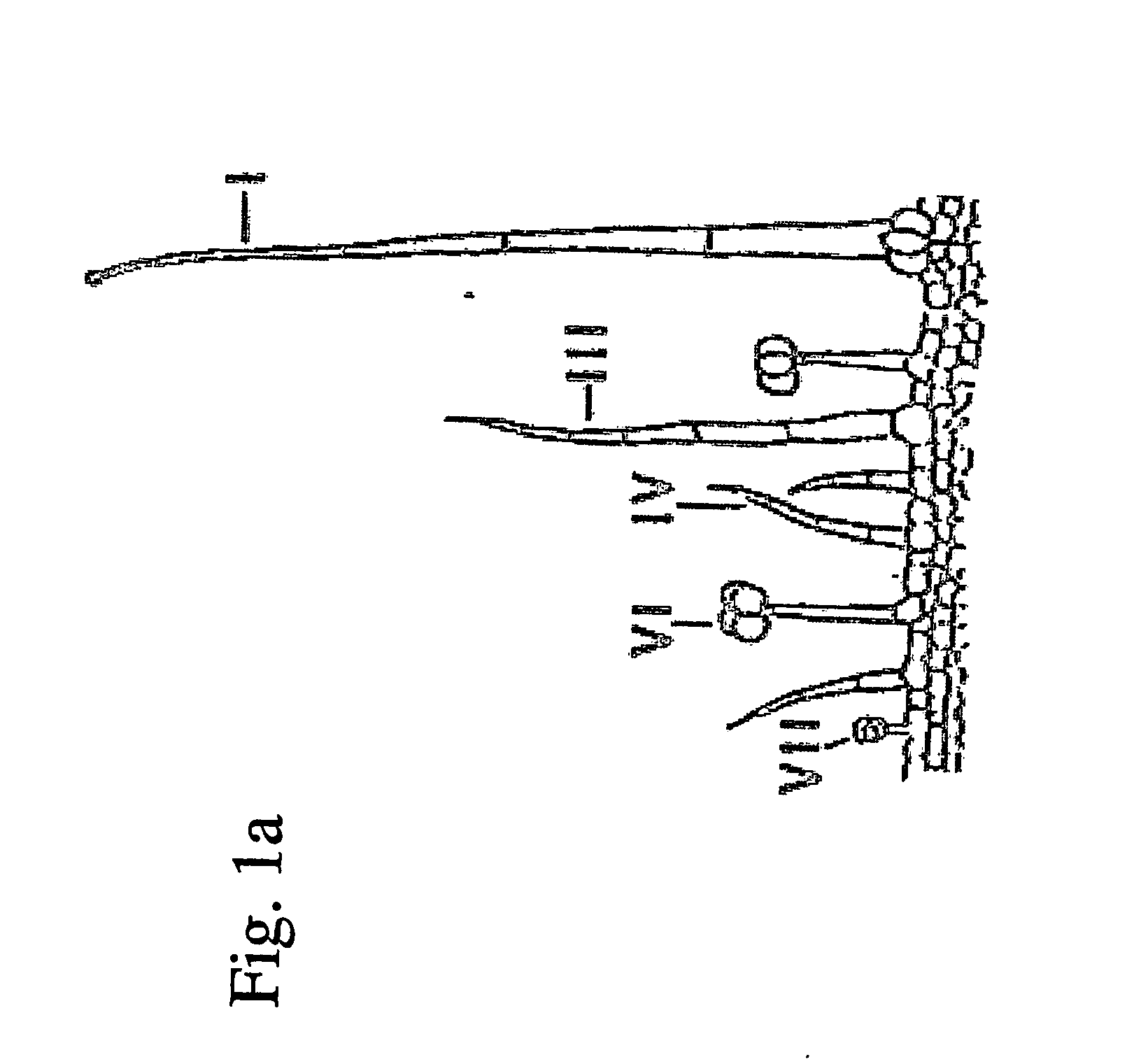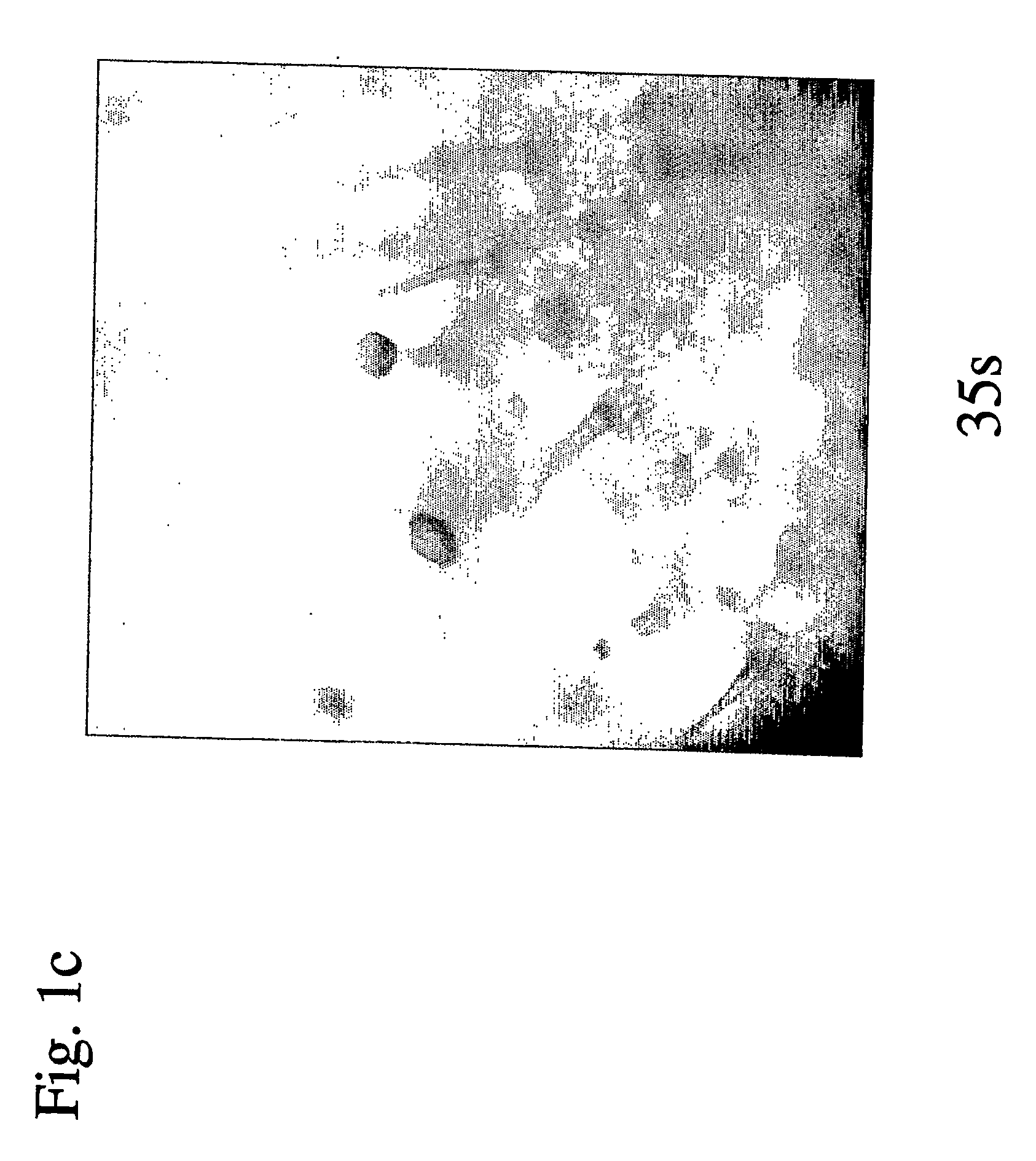Nucleotide sequences for regulating gene expression in plant trichomes and constructs and methods utilizing same
- Summary
- Abstract
- Description
- Claims
- Application Information
AI Technical Summary
Benefits of technology
Problems solved by technology
Method used
Image
Examples
example 1
Cloning Promoter Regions of Trichome Expressed Genes and Identifying Trichome-Active Promoters
[0156] Promoters suitable for expressing proteins in trichomes were identified by sequencing the genomic DNA upstream region of various cDNAs obtained from genes expressed in leaf tissues.
[0157] Materials and Methods
[0158] Isolation and Cloning of Trichome Promoter Sequences in a Binary Vector:
[0159] The NCBI database of 126,000 tomato expressed sequence tags (ESTs) (including 5,000 ESTs originated from cDNA libraries originated from the trichome issues) and all transcribed nucleotide sequences described in literature or directly submitted to NCBI (cDNAs) were used for the identification of trichome active promoters. Keywords representing each sequence and expression pattern thereof were collected and stored in a database.
[0160] LEADS™ software (Compugen, Ill.) was used for clustering and assembling the tomato sequences and provided more than 20,000 clusters representing different gene...
example 2
Cloning of Trichome Active Promoter Sequences
[0179] Several genomic sequences were already described and validated in the literature as trichome-specific promoters. In most cases promoter validation was effected in tobacco plants. However, none of these sequences were analyzed in tomato plants. Hence there is no way to predict which of these promoters will be active in tomato.
[0180] Materials, Methods and Results
[0181] A previously described tobacco promoter, (8) was isolated from genomic DNA (gDNA) of Nicotiana tabaccum, var Samsun NN using two sets of overlapping primers: 1. Forward-5′-AAATCTAGACTACCATCGCTAGTAATCGTG-3′ (SEQ ID NO: 30) and Reverse-5′-GTTGAAGAACTGCATCCCGGGAGG-3′ (SEQ ID NO: 31) to provide the sequence product set forth in SEQ ID NO: 32 (TR25-2, SEQ ID NO: 67); 2. Forward-5′-AAATCTAGATAAGTTGATAAAGCTAATTTCTC-3′ (SEQ ID NO: 33) and Reverse-5′-TTTCCCGGGACCTGGAGGCAATC-3′ (SEQ ID NO: 34) to provide the sequence product set forth in SEQ ID NO: 35 (TR25-3, SEQ ID NO: 68)...
example 3
Cloning of Tomato PPO Promoters and Signal Peptide
[0186] Tomato polyphenol oxidase (PPO, GenBank Accession No: Z12833 for PPOA, GenBank Accession No. Z12836 for PPOD) is the major protein in type VI trichomes of tomato (5). Hence it was expected that the promoter region upstream the PPO gene will direct the expression of foreign genes to the trichome cells. PPO is encoded by closely related, seven members, gene family. A previous publication identified which of the gene family members are preferably expressed in the trichome cells (5).
[0187] The genomic sequence of the PPO gene family was published. Still, in most cases, promoter activity was not tested for the sequences upstream of the genes.
[0188] Materials, Methods and Results
[0189] The promoter sequence of PPOA and PPOD was cloned from wild tomato (Lycopersicon pennellii) and cultivated tomato (Lycopersicon esculentum), respectively. Cloning of the putative promoter region of PPOA was effected by amplifying the genomic seque...
PUM
| Property | Measurement | Unit |
|---|---|---|
| Fraction | aaaaa | aaaaa |
| Fraction | aaaaa | aaaaa |
| Fraction | aaaaa | aaaaa |
Abstract
Description
Claims
Application Information
 Login to View More
Login to View More - R&D
- Intellectual Property
- Life Sciences
- Materials
- Tech Scout
- Unparalleled Data Quality
- Higher Quality Content
- 60% Fewer Hallucinations
Browse by: Latest US Patents, China's latest patents, Technical Efficacy Thesaurus, Application Domain, Technology Topic, Popular Technical Reports.
© 2025 PatSnap. All rights reserved.Legal|Privacy policy|Modern Slavery Act Transparency Statement|Sitemap|About US| Contact US: help@patsnap.com



